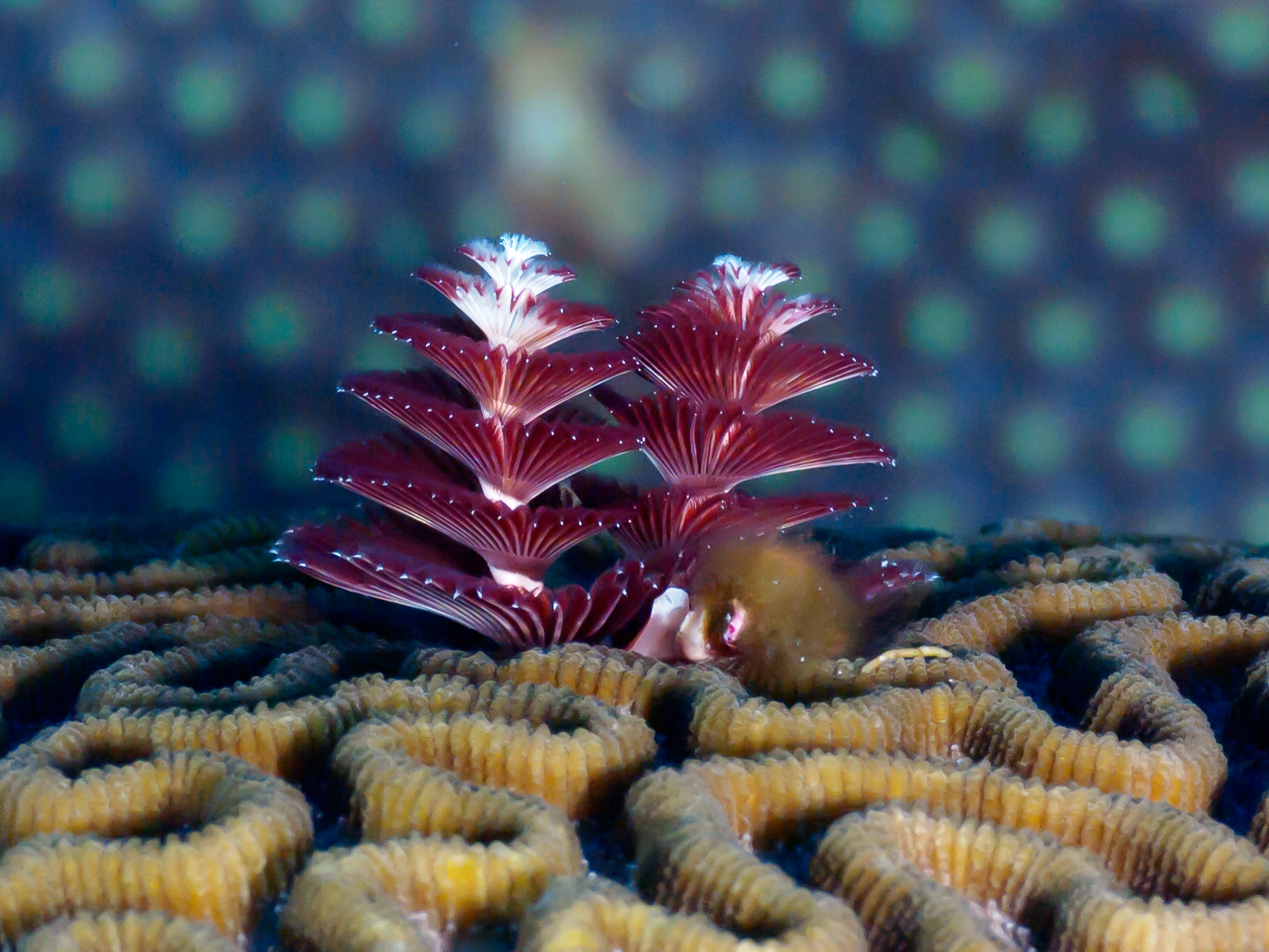
Five Species Spreading Holiday Cheer Under the Sea All Year Long
Seas and greetings! It may not be intentional on their part, but our national marine sanctuaries are filled with festive animals ready to spread holiday cheer. Turn on your bright lights and your favorite holiday playlist and celebrate with some of the species who have the holiday spirit under the sea all year long.
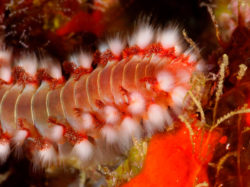
Bearded fireworm in Flower Garden Banks National Marine Sanctuary. Photo: Steve Miller
Bearded Fireworm – Not to be confused with Mr. Claus himself, bearded fireworms have a vibrant red body and a white, bristly “beard” on their edges. These bristle worms prefer reefs and rocky areas and live throughout the tropical western Atlantic. Within the National Marine Sanctuary System, they can be found in Flower Garden Banks and Florida Keys national marine sanctuaries. Unlike Santa, bearded fireworms are quite small, reaching lengths up to 35 centimeters but on average are only about five to 10 centimeters. They are slow-moving and harmless unless threatened, which is when their white bristles flare up, using a poisonous secretion to cause burning sensations on their attacker if touched. With that being said, don’t get on their naughty list!
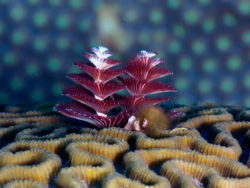
Christmas tree worms on top of corals in Flower Garden Banks National Marine Sanctuary. Photo: Steve Miller
Christmas Tree Worms – They may live on coral reefs, but can you guess what these marine worms look like? Yep! Christmas trees. Their Christmas tree-like appearance comes from hair-like appendages, called radioles, that protrude from its tube-like body and radiates from the worm’s central spine. These appendages are used for breathing and catching dinner floating on by in the water column. They are smaller than their land-based worm counterparts, reaching an average length of about 1.5 inches which mean no ornaments please! Once they find the perfect coral to settle on, they stay fixed to that place for their entire lives. Their bright colors make them easy to spot and they can be found in Gray’s Reef, Flower Garden Banks, and Florida Keys national marine sanctuaries all year long.
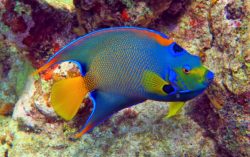
Queen angelfish swimming at Pickles Reef in Florida Keys National Marine Sanctuary. Photo: Daryl Duda
Queen Angelfish – With their striking color and small size, these fish might be the perfect Christmas tree topper to the Christmas tree worm! Queen angelfish are some of the most colorful reef fish in the Caribbean, sporting blues, reds, yellows, purples, and more. Their royal status comes from the coloration on their heads that look like a royal crown. Queen angelfish are foragers. They set up cleaning stations in seagrass and eat parasites and growth off of larger fish, turtles, and other animals. These helpful fish ought to join Santa’s team of elves and reindeer! They live in the Western Atlantic Ocean and can be found in Flower Garden Banks and Florida Keys national marine sanctuaries.

Snow egret seen in Monterey Bay National Marine Sanctuary: Photo: Dan Killam
Snowy Egret – The feathers on this beautiful bird resemble a perfect blanket of snow that adds a little extra magic to the winter holidays. Snowy egrets are graceful, medium-sized herons with long, thin legs and bills. Their bills and legs are black and their feet yellow. You will often find these birds walking in shallow water as they search for food, and sometimes they stand ever-so-still to trick prey into thinking not a creature is stirring before snatching them up in their bills and swallowing them whole. Their elegant white plumage was historically a common material used for women’s clothing and hats, which is why they were nearly overexploited.
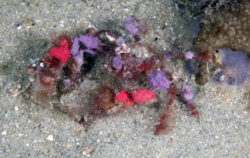
Decorator crab camouflaged with tunicates. Photo: Greg McFall
Decorator Crab – They don’t deck their shells with boughs of holly, but decorator crabs do adorn their shells with objects they find along the ocean floor like you might add candy to the sides of a gingerbread house. This is to help them blend into their environments and avoid predation. Typical items the add to their shells include seaweed, coral rocks, and even smaller animals. Instead of icing or staples, they affix items to their shells using hooked bristles, which act like a sort of Velcro. The animals that do get stuck on their back form a mutualistic relationship with the crab as they feed on the scraps that the crab leaves behind. Like many crabs, decorator crabs shed their shells when they become too large for it. These shells are found in shallow coastal waters and reefs all over the world.
